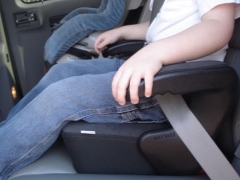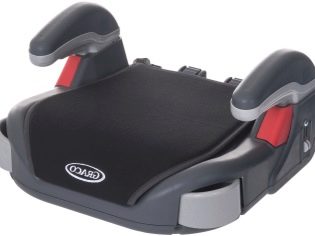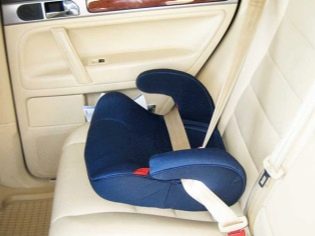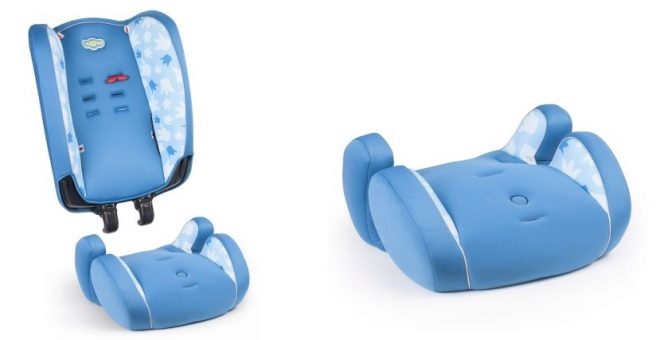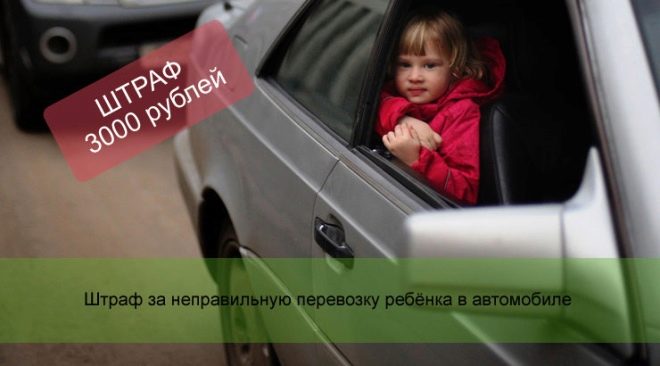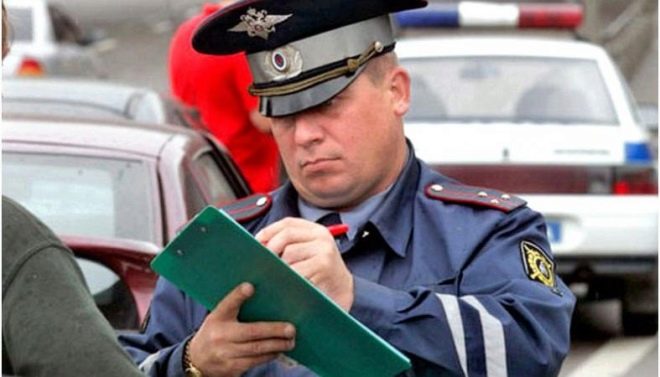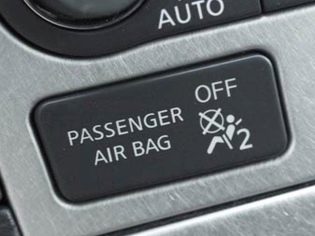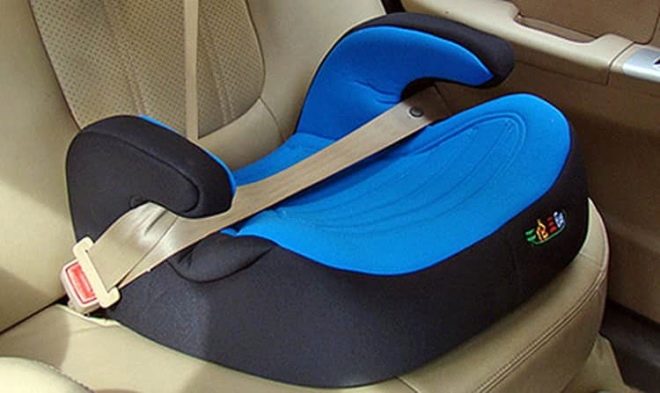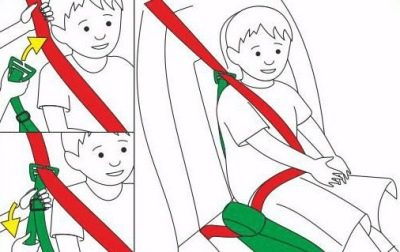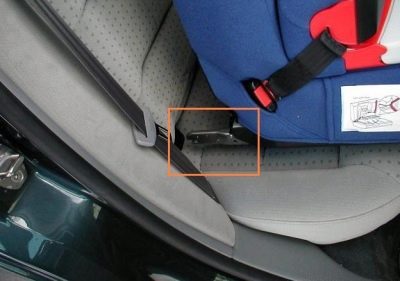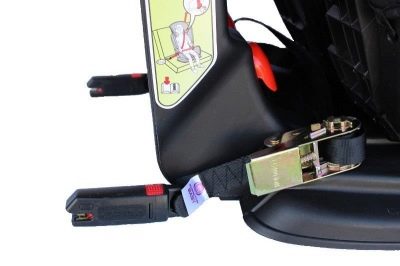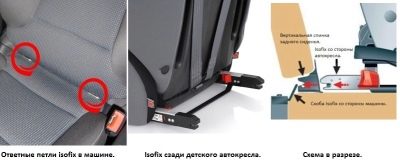How to fix the booster in the car?
For the transportation of children in the car, a number of specific requirements are being put forward - and the traffic police officers and parents themselves want the safety of the baby to be at the same level as the adults. This is somewhat more complicated, since the entire safety of the car is designed specifically for an adult, so the airbag can injure a small passenger during heavy braking, and regular belts instead of the body fix the throat, which also does not contribute to protection against injury.
You can, of course, buy a special car seat, but it seems to many quite cumbersome and expensive, so the booster as a reduced version of the car seat is widely popular.
What it is?
The booster is a kind of lining, a kind of seat without its own backrest (emphasis is placed on the back of the car seat), but with armrests.
Unlike the car seat, the booster is deprived not only of the back, but even of its own belts - it is assumed that the child sitting on the booster will be fastened with regular belts of the car. Actually, this is the meaning of the accessory - it noticeably lifts a small child above the level of a standard car seat, thanks to which the regular car belt is located exactly where it would be in the case of an adult.
For children, this option is convenient because in terms of size it roughly corresponds to the parameters of the child, so that the small passenger does not fidget in the wide seat on sharp turns, and in the event of an accident, is reliably fixed. Parents prefer such a car accessory because of its price and low weight, because there is nothing in the device except for its own seat and small handrails.
Naturally, due to the design features, the booster is not suitable for every child. For example, it is completely inapplicable for infants and the youngest preschoolers, but from about 3–4 years old it can already be used a little, provided that the baby has at least 120 cm of height and is fixed securely in a particular model. By the way, many models of universal car seats, designed for different children's ages, give parents the opportunity to unfasten the back of the device with time, turning it into a booster.
The word “booster” is not found anywhere in the SDA, however, they stipulate that any children under the age of 12 years must be transported in special restraints, which include the booster.
Fully certified accessory, unlike the motley self-made pillows and other pads under the ass, will help to avoid a fine of 3 thousand rubles when meeting with the traffic police, not to mention the fact that it will provide a much higher level of safety in an emergency.
However, some unscrupulous law enforcement agencies tend to take advantage of the illiteracy of the driver in order to fine him even in spite of the presence of a booster - referring to the fact that such a device does not fit the ones described in the SDA. In such situations, it remains only to assert their rights, preferably - by providing all the necessary certificates of conformity.
Where better to install in a car?
Chapter 22.9 of traffic rules clearly indicates that you can mount the booster in the car even in the front seat, even in the back - the driver has the right to choose.However, DPS officers try to charge illegal fines precisely when a child is transported in the booster in the front seat, because it is traditionally considered less safe, so drivers are on average more willing to pay just such a fine.
It should be understood that such a fine will go into the pocket of an enterprising inspector, since in fact there is no offense here. Another thing is that the installation of the booster, as well as the car seat, is really not recommended in front.
The safest place in the car is considered to be the position in the middle in the back seat, because there the fastened small passenger is reliably protected from frontal and side collisions.
If the child is still sitting in front, you need to take a step that seems illogical - turn off the airbags on the other side. The meaning of this act is that often such a pillow is revealed with considerable force, therefore, it is itself capable of injuring a child whose bones do not yet have high strength. At the same time, some sensitive security systems work even in relatively weak collisions, and then it turns out that the child was injured in the accident not because of the collision itself, but because of the great care of the car manufacturer about the safety of passengers.
Separately, it should be noted that although many pediatricians require the law to prohibit the transportation of children under 5 years of age in the position of the car, no booster provides an opportunity to fasten a child "back to front". Because of this, in case of sudden braking, a strong “nod” of the head is possible without bringing the body forward, which in itself can lead to a neck injury, especially if we are talking about a small child.
Fastening regular seat belts
Until now, most models of boosters suggest mounting in the car with the help of standard seat belts, which fix not only the passenger himself, but also his seat. This method of fixation can not be called the most reliable, however, it is absolutely suitable for all cars without exception, including even the oldest samples of the Soviet automobile industry.
For a start, the device simply fits onto the car seat, then a child is put into it. Regardless of the height and weight of the baby, the lower band is pulled under the armrests - so that it lies on the passenger's feet, which will be fixation of the accessory itself. The back of the child is fixed by a diagonal belt, and there are already some slight differences in how to properly fasten the baby, depending on its weight.
For a preschooler weighing about 15-25 kg, which belong to the 2nd group of car seats, the shoulder strap needs to be stretched only under one armrest, but for children of group 3 weighing 22-36 kg the upper part of the belt does not pass under the armrests in general - to fasten a passenger need over them.
It should be noted that many manufacturers offer complete with a booster and a special loop, the task of which is to grab a regular seat belt and pull it away so that it is far away from the face of the child. The loop itself is attached to a diagonal belt located behind the baby.
Experts note that the main function of such a device is usually not performed, because in a crash in a strong collision, such a loop just bursts, because of which the suddenly released belt crashes into the face of a small passenger, injuring him. Therefore, the acquisition of such a loop is advisable unless in the event that a regular car belt constantly rubs the neck of a child.
How to fix with Isofix?
Among the manufacturers of special devices for the transport of children, a system called the Isofix or Latch is becoming increasingly popular - if the device was manufactured in the USA and slightly different in terms of attachment.
All observers note that this method of installation is much safer, since the risk of the booster itself is minimized from regular seating.
However, for mounting a device with this system, it is necessary that the car also possesses the appropriate fixings. In recent years, you can buy and special devices, thanks to which any Soviet car will be equipped with such fasteners, attached to the seat straps. However, the reliability of such tricks causes some doubts.
The meaning of Isofix is that special brackets are welded to the frame of the car in the area of the seat, which are the fixings for a potential booster or car seat. Special devices for transportation are equipped with special rods, which ideally fit into these brackets and are fixed with a characteristic click.
Thanks to this design, the probability that the booster with a strong frontal collision just tears away from the seat is reduced several times - therefore, even on regular car straps, the load will be less, because they only have to hold the child. In this case, the baby is fastened in the same way as in the case of the classic booster without Isofix.
For information on what a booster is and how to install it correctly, see the following video.
